The Slow Boat in Laos refers to the river taxi that runs from the border of Thailand to Luang Prabang, the old capital of Laos until 1975. Here’s a complete guide for the tour, whether you book with an agency or purchase every step on your own.
I originally went down the slow boat back in 2017 as one of my Visa runs while living in Chiang Mai. Back then, I said it wasn’t a once-in-a-lifetime experience as I was looking forward to doing it again someday. Well, now I have repeated my journey and garnered even more information on how to make it a successful, fun, and inexpensive trip.
For the most up-to-date information, check out my separate article about all the changes to the Thailand to Laos slow boat in 2024.
What is the Slow Boat in Laos?
For centuries, the only way to traverse the jungles of Laos was by elephant or some herculean hiking skills. The other option was to take a boat up or down the river. Not long ago, a few basic dirt roads were constructed. Then in the 1960s, a barebones highway system was built in Laos by the Chinese. These roads were treacherous and in some cases only available to the military.
Thus, to this day, the Mekong River has been the primary method of traveling through Laos by locals and foreigners alike. And not just Laos. The Mekong River actually starts as the Lancang River in the heart of China. It creates the border between Laos and Myanmar, and then separates Thailand and Laos before it turns deeper into Laos. Most of the major cities in Laos, including the former and current capitals (Luang Prabang and Vientiane), are on the river. It continues south into Cambodia, runs through the Cambodian capital of Phnom Penh, and finally reaches the sea in Vietnam. The massive Mekong Delta is the second largest delta in the world, just to the south of Ho Chi Minh City (also known as Saigon).
The slow boats ply the river every day running both north and south (unless the rumors are true that there are no boats during the rainy season). The boats are flat-bottomed and have about 70 seats available, depending on the configuration. There are usually two rows of seats, four or five across, but some of the fancier tour boats have fewer seats and tables available.
Behind the seats is usually a tiny food station with a small selection of snacks and drinks. Behind this is a simple bathroom with a modern toilet, but you have to pour water in from a bucket to flush it. At the rear of the boat is the engine room. The engine is a beast of a machine which will deafen you. That’s where you can go to smoke. A lot of the locals who are using the boat as a taxi between villages also hang out there.
How to Get to the Slow Boat
The easy way to take the slow boat is to sign up for a tour, either from Chiang Mai or Chiang Rai. The tours from Chiang Mai are three-day tours and include a few attractions in Chiang Rai at the end of the first day (after the four-hour bus ride to get there). The tours from Chiang Rai are just two days. Tours are as little as $50 (for the two-day option from Chiang Rai). Or you can get a “luxury” cruise for as much as $634.
To be honest, taking a prepackaged tour just isn’t worth it. You might have marginally more peace of mind, but making the journey on your own is actually dead easy. It’s the logical method if you’re on a budget, but why waste the money even if you’re not tight?
The first step is to get up to Chiang Rai. If you’re traveling from Chiang Mai, head to the Arcade Bus Station on the east side of town near the Central Festival Mall. Go into the terminal on the south side of the street and find the Green Bus Company to your left as you enter. They’re the only decent company with buses to Chiang Rai. Tickets are about 130-250 baht ($4-$7.50) but they can sell out fast so either get there early or book online at their website.
If you get to Chiang Rai early in the day, make sure you get to some of the popular attractions there. If you arrive in the evening, get a good night’s sleep as you’ll be getting up really early. I’d recommend about 5 a.m., depending on where your accommodations are and how quickly you can get to the bus station.
Make your way to the central bus station in the center of town (which is now in a different location from the first time I went on the slow boat). The first bus to the border of Laos leaves at 6 a.m. [possibly 7:30 a.m. in 2022] and then every hour throughout the rest of the day. Tickets are 65 baht ($2), which takes you right to the border. (Two years ago, the bus dropped me off on the main road and I had to get a tuk-tuk for another 50 baht to the border 2 miles away!)
The bus takes about two hours to get to the border. If you get the 6 a.m. bus, you should be in the immigration line before 8:30. This is just before the organized tours usually arrive. Get your passport stamped out of Thailand (God forbid you’ve overstayed your visa). On the other side of immigration, purchase your ticket for the Friendship Bridge bus to Laos Immigration. The sign says tickets are 20 baht, but they’ll charge you 25 ($0.80). The bus across the Friendship Bridge leaves every ten or fifteen minutes and takes about 10 minutes.
At the Laos border, there are several steps to take. First of all, fill in the TWO arrival forms with all your information. There are several windows and it can be really confusing. In the center of the building are the usual immigration officer stations. These are your last stop. Instead, head to the far right where you’ll see two windows. Give your immigration forms to the clerk at the right window, along with your passport and a spare passport photo.
Keep your attention on the window to the left. A few minutes later, they’ll call your name. This is where you have to pay for your visa. You can pay in Thai baht, but it’s cheaper (and preferred by them) to pay in US dollars. The cost depends on your nationality and ranges from $30 to $42. For US and UK citizens, the cost is $35. Also, note that there is an additional $1 fee if you’re arriving on the weekend, and probably other times as well. The Laotians certainly love to skim some extra money wherever they can.
Finally, it’s time to get some Lao kip. As of mid-2019, the conversation is $1 USD to about 8,500 kip (yep, it’s crazy!) and 1 Thai baht to 273 kip. Many of the money exchange services and ATMs throughout the country will give the same, fair rate, including at the border. You can either use the ATMs around the corner, or exchange Thai baht with the snacks lady. If you’re traveling solo, I’d recommend getting around 500,000 kip ($60/2000 baht) for the first three days in Laos, or 1 million kip per week. [These figures might be higher for 2022.]
With your local cash in hand, head to the immigration windows in the center of the building. You should still be there before the tour company crowds arrive. If so, you’ll be through in a couple minutes. Finally, pay 20,000 kip ($2.50) for the taxi waiting at the curb to take you to the pier. It’s about a 30-minute ride. If everything goes fine, you’ll be at the slow boat ticket counter by 9:30 a.m., two hours before the boat is scheduled to leave.
What to Do on the Slow Boat for Two Days
The slow boat departs from the village of Huay Xai. To purchase your tickets, walk just a few steps up the hill opposite the boats. There’s a ticket hut at the top. You can get tickets to Pakbeng or Luang Prabang (only select the latter). It’s 210,000 kip ($26) [300,000 in 2022] per person and doesn’t include anything except a seat on the boat. Going this way means you have to purchase all your meals separately and make your own booking for a place to stay in Pakbang – the halfway point between Huay Xai and Luang Prabang. Getting to the ticket booth as early as possible is beneficial as the seats are numbered on the first day (it’s first come, first serve on the second day), and I personally consider the seats at the front of the boat to be more comfortable as you have some floor space to play around with.
Spend the couple hours before the boat leaves to get breakfast at one of the local restaurants, order a couple sandwiches, some snacks (if you haven’t brought them already) and plenty of water (I’d recommend at least 2 liters). You’ll probably still have some time to meet your traveling companions before departure.
The boat is scheduled to leave at 11:30 a.m. Two years ago, it didn’t get underway until noon, but this time it “weighed anchor” just after 11:30 (not that the slow boat uses anchors). Now it’s time to relax and get the camera and those cards ready to go. It’s six hours of cruising on the first day, and seven on the second day.
The wilderness and wildlife along the banks of the Mekong River are worth the whole journey. Hopefully you’ve got a DLSR or perhaps the Huawei P30 with a good zoom to catch all the water buffalos, goats, elephants and other creatures coming down to drink. On my recent ride, significant portions of the jungle were on fire or recently scorched, but the majority of the journey was still lush, verdant jungle foliage interspersed with irregular, small settlements.
The slow boat stops at most of these settlements to drop off or pick up customers and goods. Sometimes kids come out to see the boats pass by. On the second day, the boat docked on a sandy beach while local children ran up to sell friendship bracelets to the passengers. A mere 5,000 kip for one was too good to pass up.
Perhaps there are some people who can gaze serenely at the jungle for the full thirteen hours of the cruise, but personally, I like a little more action. It’s also nice being disconnected from the Internet and other distractions of life for a little while. The Kindle is the best option with a couple good books. I don’t have one, but my tablet with Google’s Play Books and the Kindle apps are acceptable substitutes. Just make sure you bring a power pack (I’d recommend Anker) to charge your devices. A lot of the passengers were also watching movies. I went through half of one myself.
Depending on the crowd, there can be a variable level of camaraderie. On my first ride in 2017, there were so many passengers that we were barely able to fit on two boats. We also had a high percentage of college-aged passengers, and things got a bit wild more than once. On my second trip, the crowd was generally older and more relaxed. Regardless, I had brought an Uno deck and had no problem getting several other players to join in for a couple hours. Regular playing cards are good too, but Uno seems to be suitable for more players.
If you’re a digital nomad like me, you could also bring your laptop along to get some work done. Just remember that there aren’t any power outlets on the boat. I did some writing on my tablet, but personally I spent the majority of my time either enjoying the landscape or getting through my novel.
Sleeping in Pakbang
The midway point between Huay Xai and Luang Prabang is a little village called Pakbeng. Well, it was small on my first trip. It got bigger. Instead of just one main street in the village, there are now two! Many new guesthouses have opened up, while the original one I stayed at in 2017 (Vatsana Guesthouse) seems to be closed. Sadly, the great pizza restaurant across the street from Vatsana is no more, but I found the Indian food at Khopchaideu Restaurant was quite good. Just know that there is actually a road connecting the pier to this restaurant and the rest of the guest houses on this street that doesn’t appear on Google Maps.
If you’ve chosen to go with a tour for the slow boat, the more expensive ones include a preselected room in Pakbeng. It was a bit disconcerting back in 2017 to see several tour passengers board the boat the next morning covered in bed bug bites. It is possible to book accommodations online in advance, but there’s no reason why you can’t just get off the boat, walk up the street, pick the first guesthouse you think looks good and get a room there. I don’t actually think it’s possible for every place to be full. Many of the rooms are as little as 25,000 kip ($3) per night [100,000 in 2022] and come with the basic amenities, but you can pay just a couple of dollars more for something a little (just a bit) more luxurious.
In the morning, make your way back toward the boat for some really nice cafes that have your American breakfast, bagel or croissant and coffee ready to go. Pick up a couple more sandwiches or some fried rice, more water and any other snacks (at a premium). There are a few snacks (chips, instant noodles and soft drinks) available on the boat, but these are even more expensive.
Finally, just before the boat leaves at 9:30 a.m., cast your gaze across the water to the far bank of the river. If you haven’t noticed them yet, you should be able to see a couple of elephants from the Mekong Jungle Sanctuary having their morning bath in the river. Not that special if you’ve already been to the Elephant Jungle Sanctuary in Chiang Mai, but hey, they’re elephants!
Arriving in Luang Prabang
The boat arrives at the pier in Luang Prabang around 3:30 p.m. Or rather, a pier outside Luang Prabang. There’s one final surprise in store. Instead of taking you to the center of town, as is completely possible, the boat takes you 5 miles away. You have to pay a final 20,000 ($2,50) for a tuk-tuk into town, even if you’re on one of the “all-inclusive” tours. As I said, the Laotians like to get their extra bits of cash.
Cost of the Slow Boat
If you purchase a slow boat tour from Chiang Mai to Luang Prabang, including a place to stay in Pakbeng, you’re looking at a price tag of around $80 or more. If you make this journey on your own, you can get that down to under $50 (not including the visa, which isn’t included in the tour either) on the following breakdown:
- Green Bus from Chiang Mai to Chiang Rai – $4
- Hostel in Chiang Rai – $5
- Bus to the border – $2
- Bus across the Friendship Bridge – $1
- Taxi to the pier – $2.50
- Boat ticket – $26 [$40 in 2022]
- Accommodations in Pakbeng – $3 [$10]
- Total from Chiang Mai – $43.50 [$64.50 in 2022]
- Total from Chiang Rai – $34.50 [$55.50 in 2022]
Not included in this total are the visa, all food and drink expenses, and the final taxi ride. Including your dinner at the Chiang Rai night market, you can keep these expenses down to about $15 for the three days (plus $35 for the visa). Just know that food in Laos is, on average, about 50% to 100% more expensive than in Thailand.
What to Pack for the Slow Boat
- $30-$42 in American dollars for the visa-on-arrival (depending on your nationality) and a passport photo
- A pen for filling out the forms at the border (none are provided and the lack of one will hold you up)
- Clean, unmarked bills. If you’re bringing baht from Thailand, make sure there are no written marks, tears, or even deep creases in the bills (restaurants in Laos will flat-out refuse to accept them)
- Lots of snacks (as mentioned, food in Laos is more expensive, and a premium in Pakbeng)
- Cards, Uno, or other simple games
- Phone, tablet, laptop, power pack, and any other electronics you need for ebooks, movies, and whatnot
- Go old-school and bring a real book or two
Everything Else You Need to Know
Are there insects on the slow boat?
This is SE Asia, so yes. There are hardly any insects or mosquitos on the boat, but you’ll be lucky to find a guesthouse in Pakbeng or Luang Prabang that is completely mosquito free, and I already mentioned the bedbugs. I won’t mention the specifics here, but you can go to my Facebook page to read about my insect horror story in Luang Prabang.
Can I get seasick?
Well, I guess anything is possible, but I’d say it’s highly unlikely. The motion of the boat is really mild and relaxing.
What footwear should I bring?
You have to take your shoes or sandals off before you get on the boat and put them in a bag. It’s a wooden floor and dirt or slivers are always a possibility, so perhaps an old pair of socks would be a good idea.
Do I need sunscreen?
Not really? The whole boat is covered. It also rains a lot in Laos, so you might not even see the sun (like my first trip in 2017).
Click to Pin It
Further Reading
Planning to visit Laos? Here are my other stories on what to do there, and some of my personal adventures.
- Journal Entry: Putting Up With the Scams in Asia
- A Guide to Spending Three Days in Luang Prabang, Laos
Here’s some extra reading to save hundreds on your next vacation or stage of your journey.
- 5 Steps to Book Cheap Flights
- Hostels: To Book or Not to Book
- Is Workaway Worth it for the Traveler?
This post may contain affiliate links. These links help give me the wherewithal to continue traveling at no additional cost to you. For more information, click here.


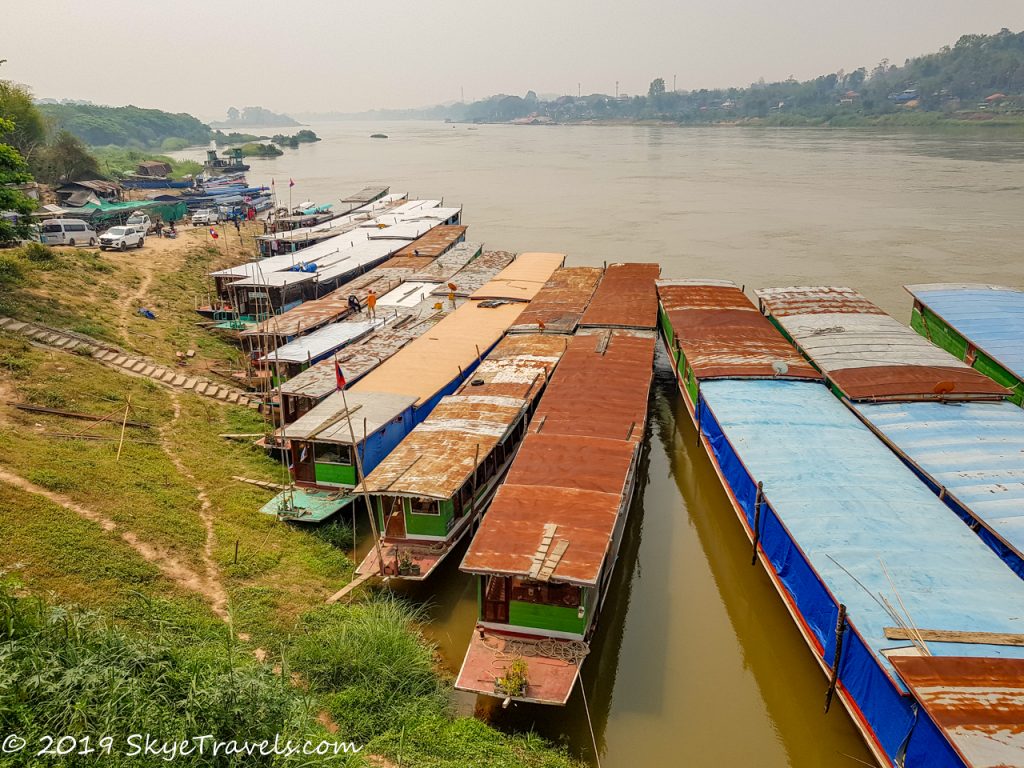
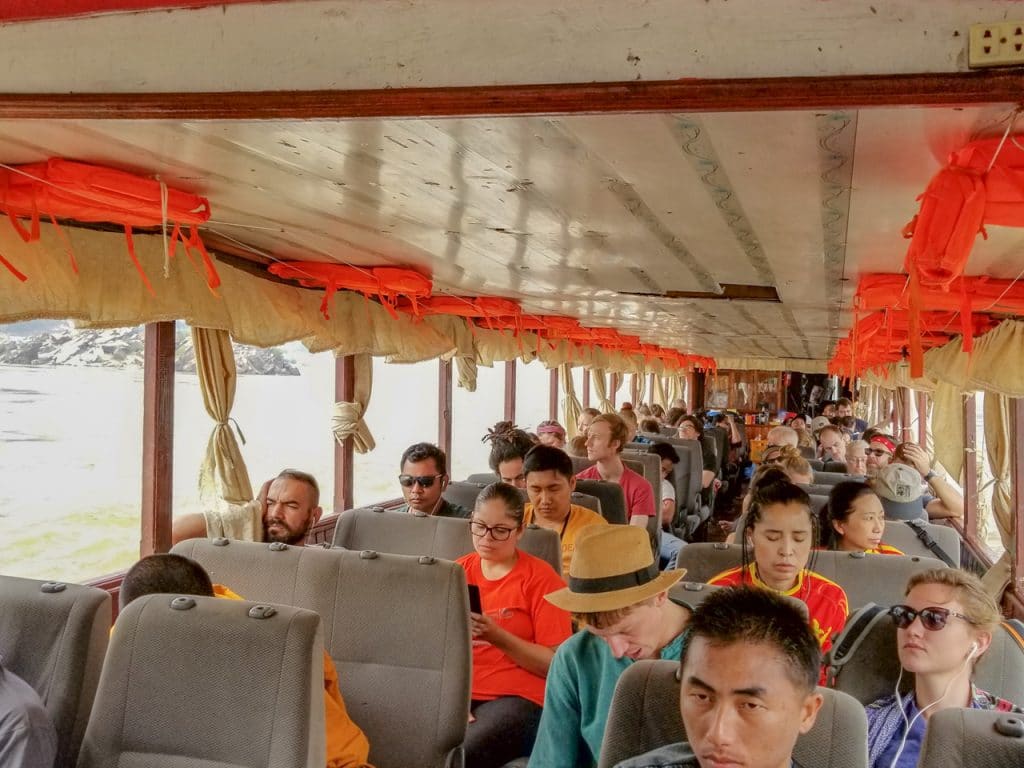
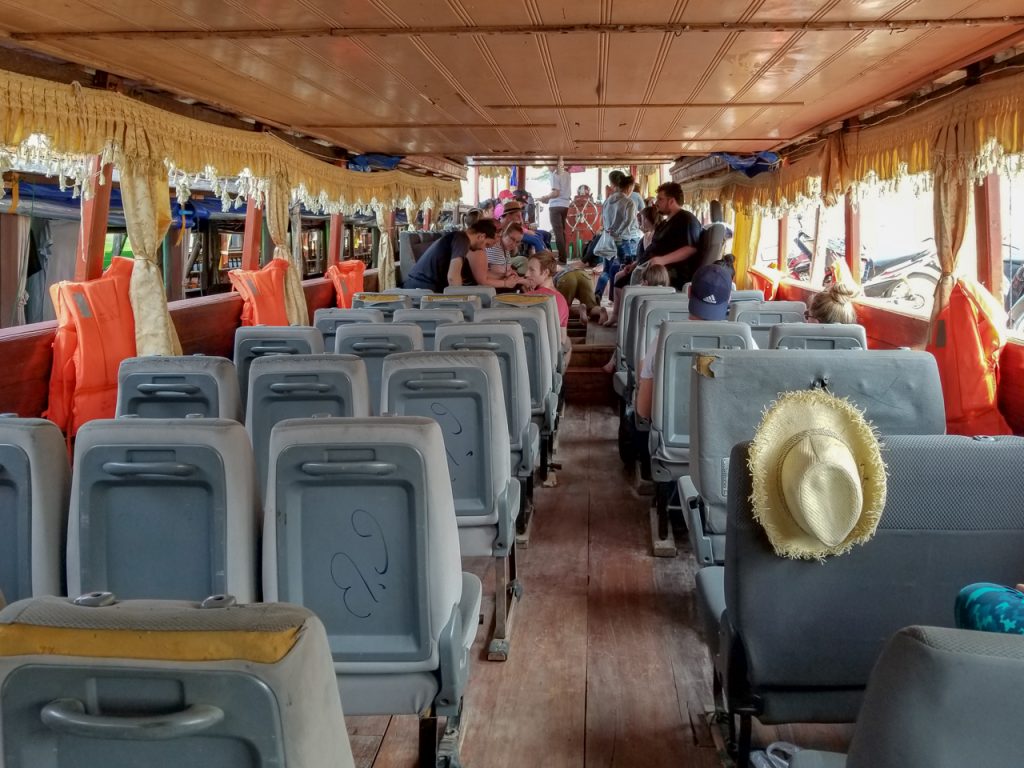


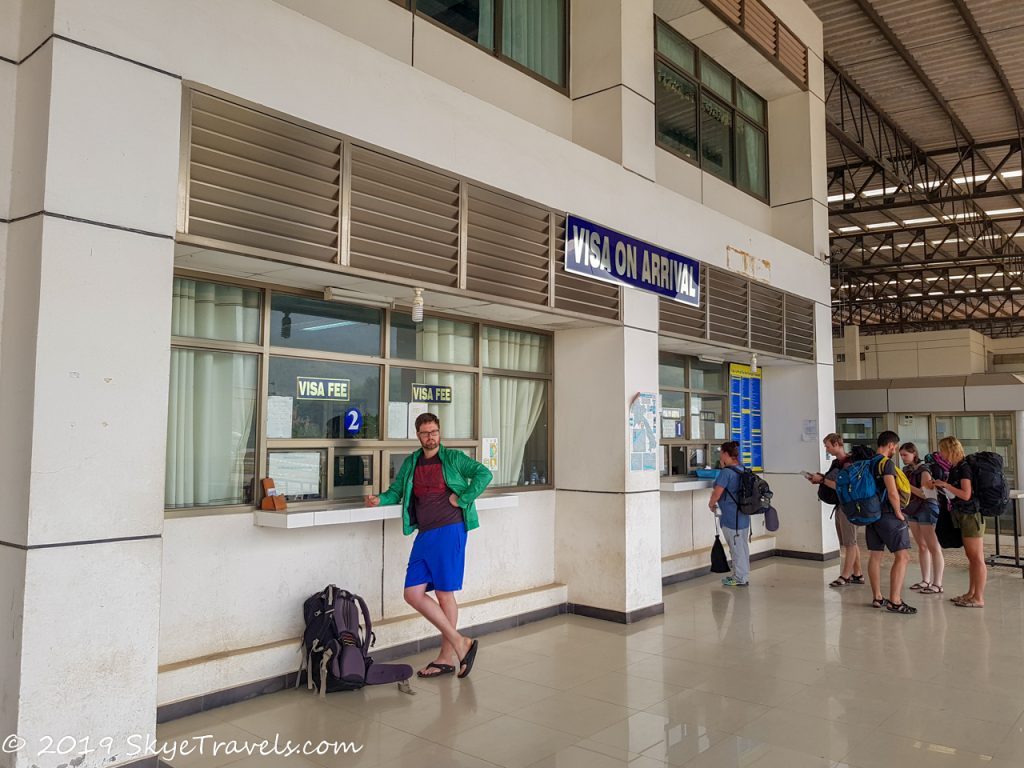
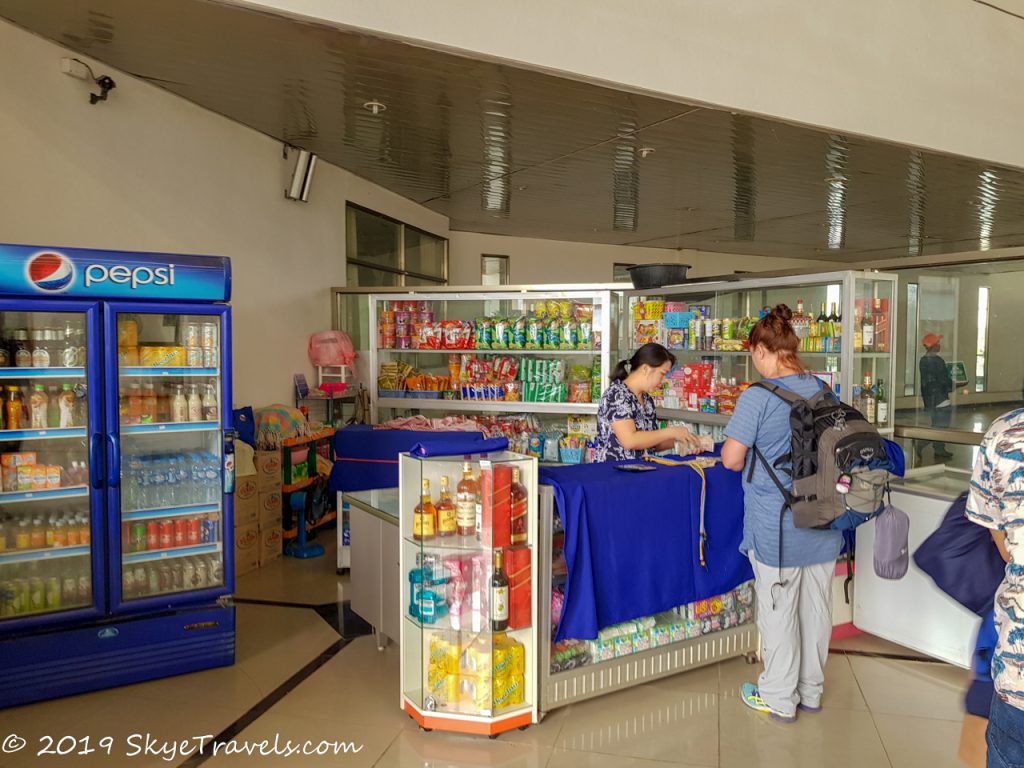
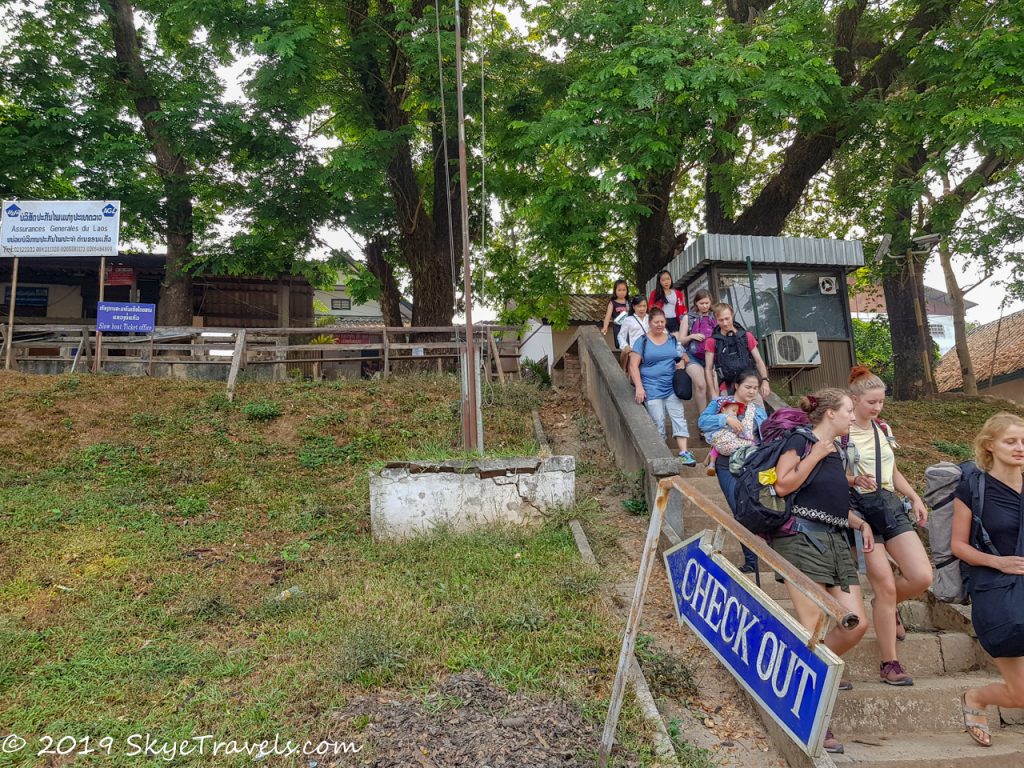
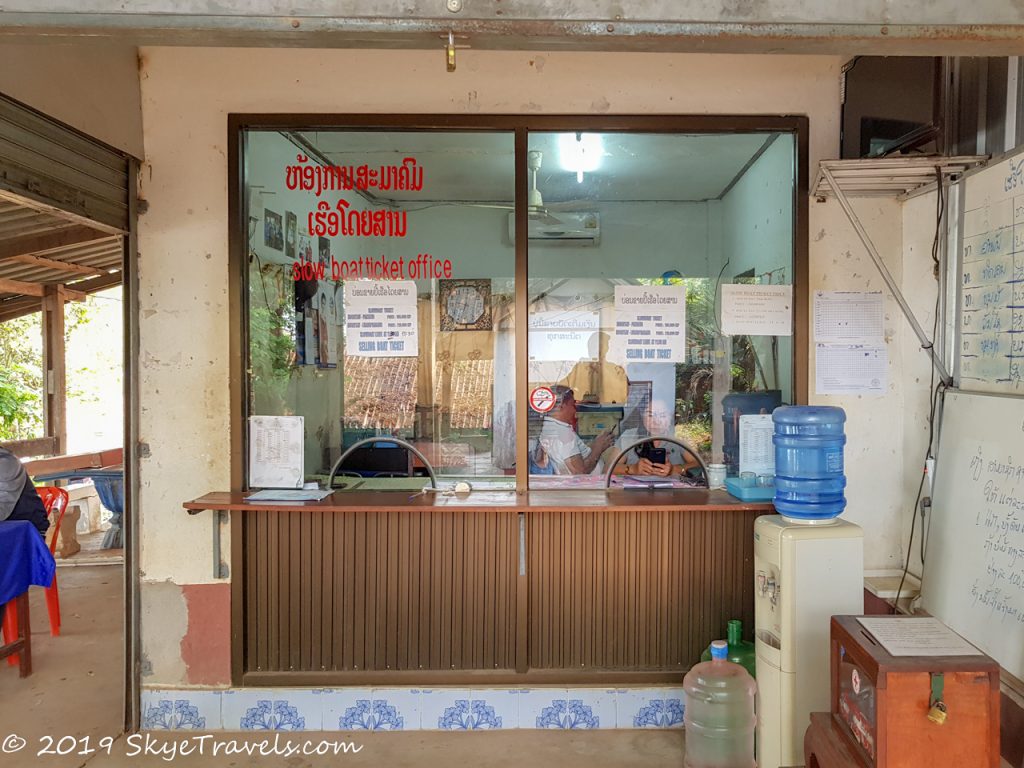
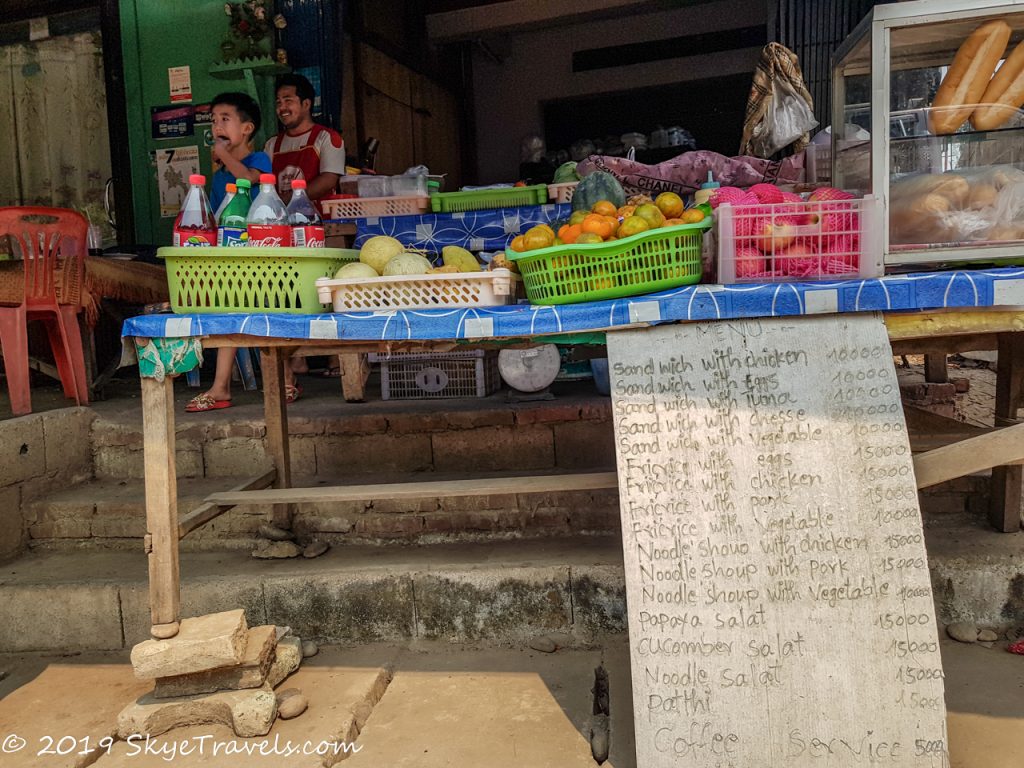
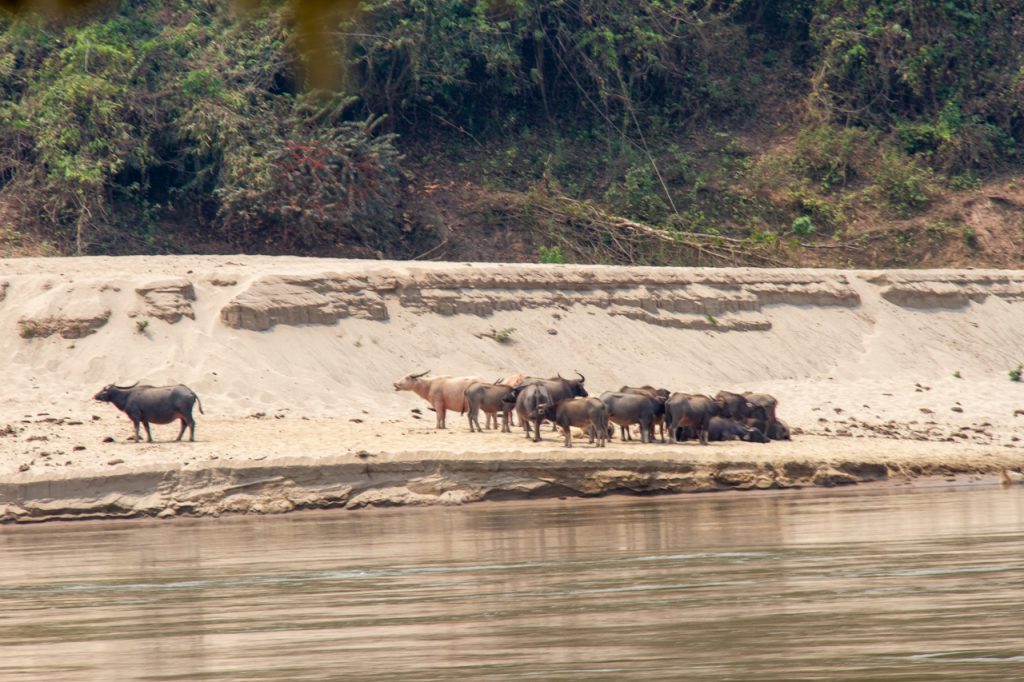
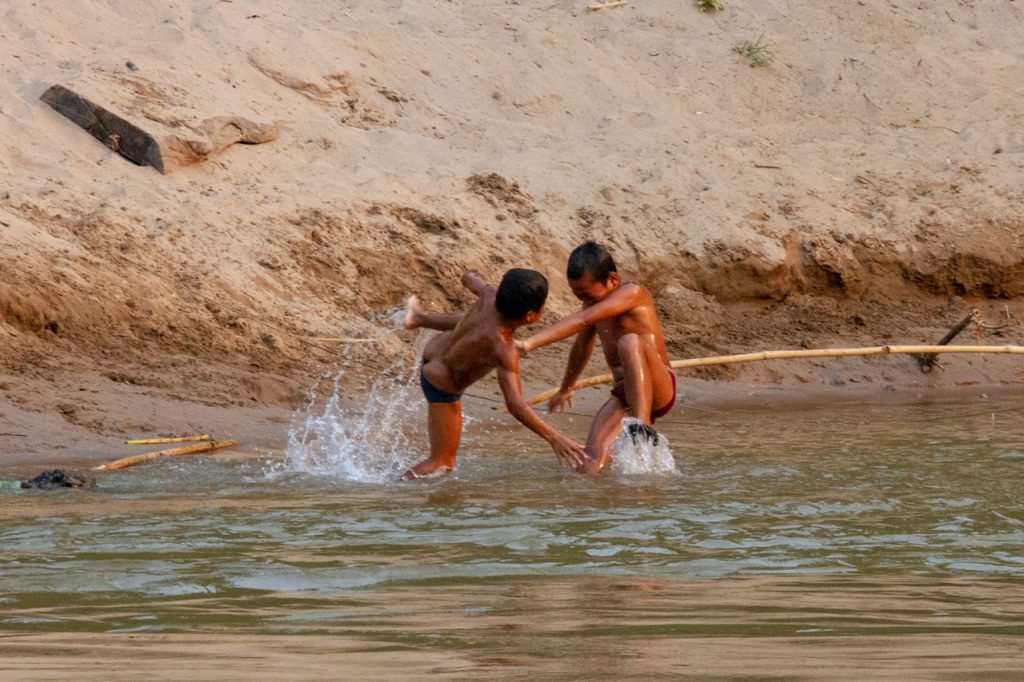


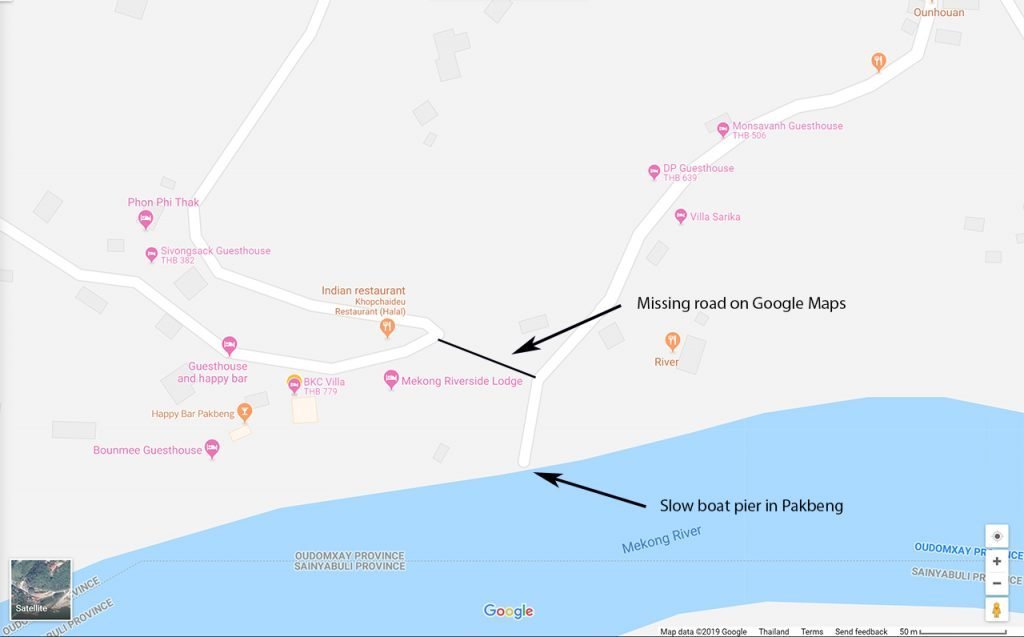

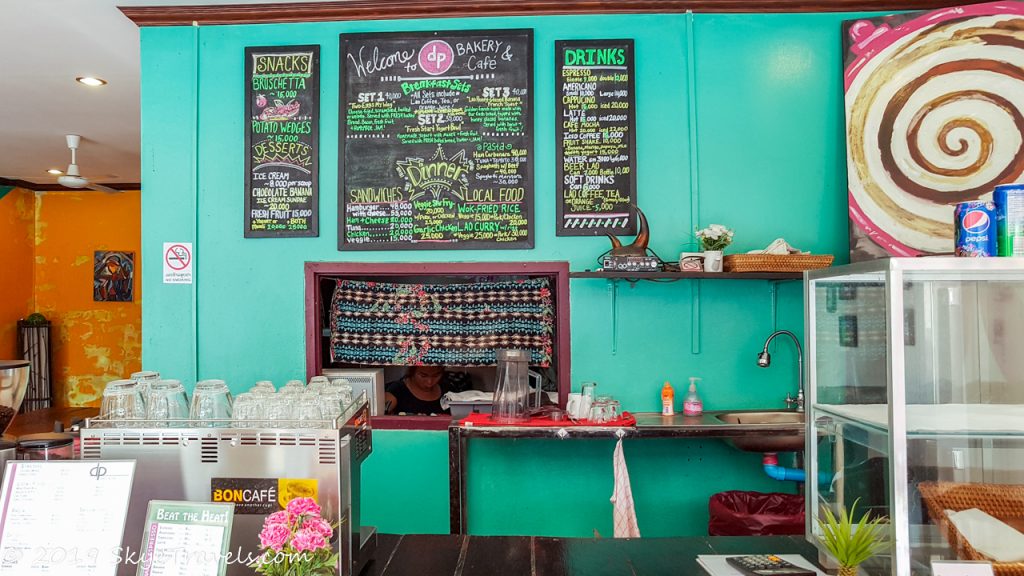






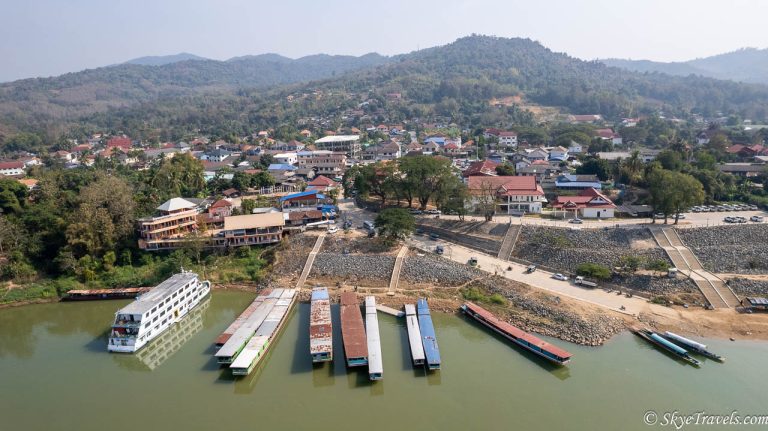


16 Comments
Did the fast boat and slow boat trip back in 2000. There was no friendship bridge, no soft seats only wooden benches. Pak Beng had 1 street and was seriously rural. Luang Prabang had very few tourists and prices were well low. I guess progress has it’s down side but at least a beautiful country is growing and catching up with it’s neighbors, not that this is always a good thing. I’m making the slow boat trip next week, a trip down memory lane you could say.
That sounds incredible! I wish I had seen it back then. I had a friend tell me about how it was like to visit Chiang Mai several decades ago, when the only way to get around was by elephant-back, as the jungle was impassable otherwise.
Hi, great guide thanks for taking the time.
My concern is that the web seems full of conflicting info (including Google maps) as to the location of the Departure pier at Huay Xai…some say its North as marked on Google and other state its now further south as also marked on Google but called `new`, adding to the confusion is that people have posted pictures of the same ticket office and conflict as to the location. I will not have a lot of time at arrival so dont want to waste it going to the wrong pier..also, Lovely Google says ticket office is a 42 mins walk from the pier. Can you or anyone else please confirm up to date location of Both ticket office and departure pier?
I was thinking on staying in Chiang Khong night before or even do crossing and stay in Huay Xia the night before
Hopefully someone else can comment on this. I haven’t heard about a new pier landing, and I know there was a much older one closer to the border crossing. I’ll be back in a few months to do the slow boat for my third time, and I can update the details as I find them then.
I tell you what since you wrote this guide the cost of things has changed considerably. 300,000kip for a ticket now. Fried rice and chicken/pork/beef are all 25,000kip now when it used to be 15. I went and walked to all the guest houses and it’s now basically 100,000 for a room. I managed to get one with a fan for 80,000 but she originally wanted 100k from me. The sandwiches here are 20,000 now also
Dang, that’s some huge increases! I guess the whole world is like that…except Morocco where I found plans nearly the exact same from 4 years ago. I’ll be back in Thailand and Laos in a few months and will definitely get all the new prices updated.
Hi, on the visa run, once arrive luang prabang, what’s your suggestion route getting back to chiangmai? Take the slow boat back again? Any advise on that?
Good question. My favorite route is to go south through Vang Vieng, Vientiane, back into Thailand to Udon Thani, and then the overnight bus back to Chiang Mai. I give a full guide to a week’s visa run through Northern Laos.
Just an important note about the bus times in Chiang Rai. The first, most early bus from terminal 1 to Chiang Khong is 7:30am. That is the FIRST available bus. This makes leaving via bus from Chiang Rai very tight. It allows almost no time for anything to go wrong. I just did this and it felt like a mad dash. If you do choose the bus, and if you actually make the slow boat you will pay 5X for thei tuk tuk to the boat ticket booth. The tuk tuk will know you are in a hurry and they will make you pay for that. Really awful but their country their rules. You will also be the last person on the boat and have the worst seats right next to the engine, that is if you actually make the boat. So disappointing that they dropped the 6am bus. It really changes things.
Thanks for the heads up! That’s so frustrating. I was told that there was no bus at that time when I went, but the bus showed up at 6 a.m. anyway. It certainly would be close if you have to leave 2 hours later.
I can confirm this. We got up at 4:45am and got to the bus station for 5:45am but the bus wasn’t leaving until 7:30am so we ended up paying 1,200 bhat for a transfer. Very annoying but didn’t want to risk arriving late to immigration and that taking so long that we missed the boat/it sold out.
I can’t believe they did that. It might be easier to spend the night closer to the border. I’ll have to do some more research and update this post. Hopefully that’s just a temporary change, or another company starts to offer the early rides.
Really great guide for taking the slowboat, have pinned it for later. Hopefully once the borders are open, these boats will be running again!
Thanks! I’d love to go back and do it a third time myself!
Lovely. Photos of the children are amazing. The boy’s fun fighting is my favourite. The information is very useful as it’s a straight forward step by step guide for a first timer. Even for a Goordie to understand 🙂 5 stars.
Thanks! I hope you can make the journey on your own someday.